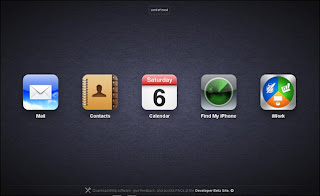
As a bit of a techie, I was eager to jump on the bandwagon and update my iPod Touch to Apple's new operating system iOS5, when it was released last Wednesday. After waiting an excruciating two hours for it to download and install, I was up and running with access to iCloud. I had a basic knowledge of what iCloud did and what it could be used for, so I went ahead and gave it access to my mail, contacts, iCal, etc. and one important new feature for the iPod touch called "Find My iPod" - which was previously available only for iPhone.
After galavanting around with my friends this weekend, I returned home to find my iPod missing from my purse, jacket pocket, backpack, and anywhere else I could fathom it might be. Then I vaguely remembered having turned on the "Find My iPod" app on my device and with great hope and anxiety, I logged onto iCloud.com for the first time. Sure enough, right next to my email, photos, and calendar, popped up a GPS icon for remotely locating my iPod. The software traced my iPod back to my friend's house, where it was sitting safely on her kitchen table. From iCloud, I was also able to send a message directly to my iPod (as well as the option of remotely locking or wiping the data) before I called and swung by to pick it up.
Since iCloud saved the day, I've been interested in what other features it has to offer. iCloud is integrated into many of the basic apps on iPhones, iPads, and iPod Touches running iOS5. These apps sync wirelessly between your devices and can be accessed via iCloud.com from any computer, anywhere. So you can take photos on your iPhone, that are automatically streamed to your free 5GB of iCloud storage so you can access them from your home or work computer, print them, or view them on your television via AirPlay for iPad. The days of plugging in and syncing devices are over and the possibilities are endless.
No comments:
Post a Comment